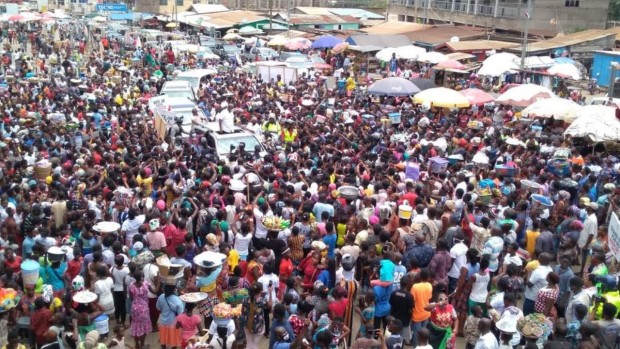Akatekyi Crocodile Pond: A Place...
September 29, 2025
Population and Growth
According to the 2021 National Population and Housing Census, Volta Region had an estimated population of approximately 1.6 million (1,659,040) people. With a growth rate of 2.1 percent, the population is projected to reach 1.8 million in 2025 and 2.1 million by 2030. The region's rapid population growth necessitates a focus on enhancing infrastructure to cater to the expanding needs of its people.

Historical Background
Before Ghana's independence, most of the region north of Ho was part of the German colony of Togoland. The southernmost part, initially colonized by the Danes and later transferred to the British, became part of the Gold Coast, now known as Ghana.
After World War I, the German Togoland was partitioned, with one portion placed under British protectorate and becoming British Togo, while the other, under French protectorate, became French Togo, now the Republic of Togo. Both territories were supervised by the Trusteeship Council of the League of Nations, which later became the United Nations.
During the decolonization process, a plebiscite was held in 1956 to determine whether the British Togoland, known as Trans-Volta Togoland (TVT) and then as Volta Region, should integrate into or secede from the Gold Coast. Although the results were inconclusive, it was eventually decided that Trans-Volta Togoland would be integrated into the newly independent Ghana as the Volta Region.
Economic Activities
The Agriculture/Hunting/Forestry industry is the largest sector in the region, except for the Keta District, where Fishing is the main industry. The region's economy largely relies on self-employment, with about 80% of the working population engaged in the private informal sector.

Ethnic Diversity and Religion
Volta Region is home to a diverse range of ethnic and language groups. The largest ethnic group is the Ewe people, making up 68.5% of the population, followed by the Guan (9.2%), Akan (8.5%), Gurma (6.5%), and other smaller groups. The region is religiously diverse, with the majority of the Ewe, Guan, and Akan people practicing Christianity, while the Hausa, Kyamba, Kotokoli, Kokomba, Nanumba, and Gurma, particularly in the northern districts, are predominantly Muslims.
Education and Literacy
The region has made significant progress in education, with a high adult literacy rate of 58.3%. The male literacy level (68.7%) is higher than the national average for males, while the female literacy rate (49.1%) is similar to the national average for females. The region has slightly lower primary school enrollment rates but higher middle and senior secondary school enrollment rates compared to the national average. However, satisfaction with the quality of education in both primary and secondary schools is relatively low, particularly due to poor conditions of educational facilities.
Volta Region is a diverse and rapidly growing administrative region in Ghana. With its unique landscapes, vibrant ethnic communities, and evolving economy, the region faces the challenge of providing adequate infrastructure and improving the quality of education to meet the needs of its expanding population. By recognizing its strengths and addressing its challenges, Volta Region can continue to develop and contribute to Ghana's overall progress and prosperity.
September 29, 2025
September 29, 2025
September 26, 2025
September 18, 2025
September 18, 2025
September 4, 2025
September 3, 2025
August 28, 2025
August 19, 2025
August 8, 2025